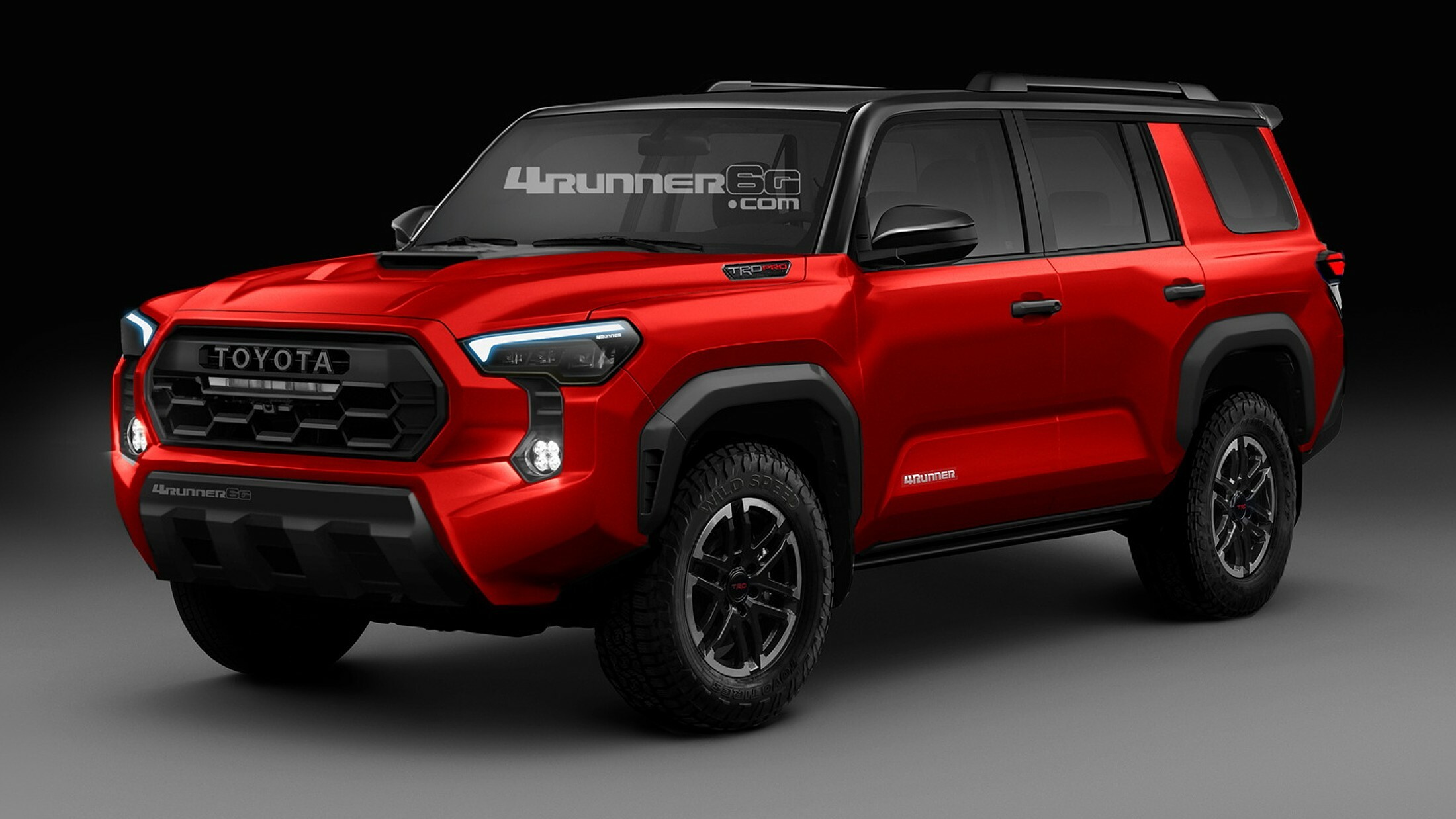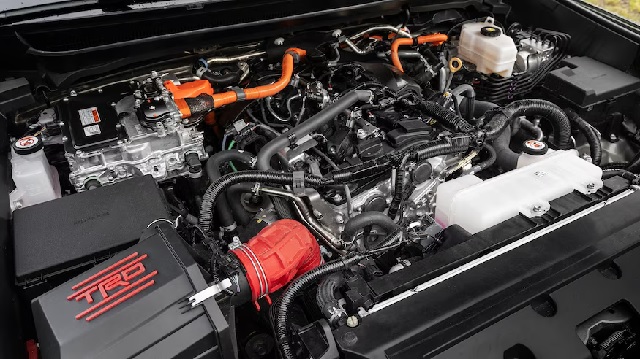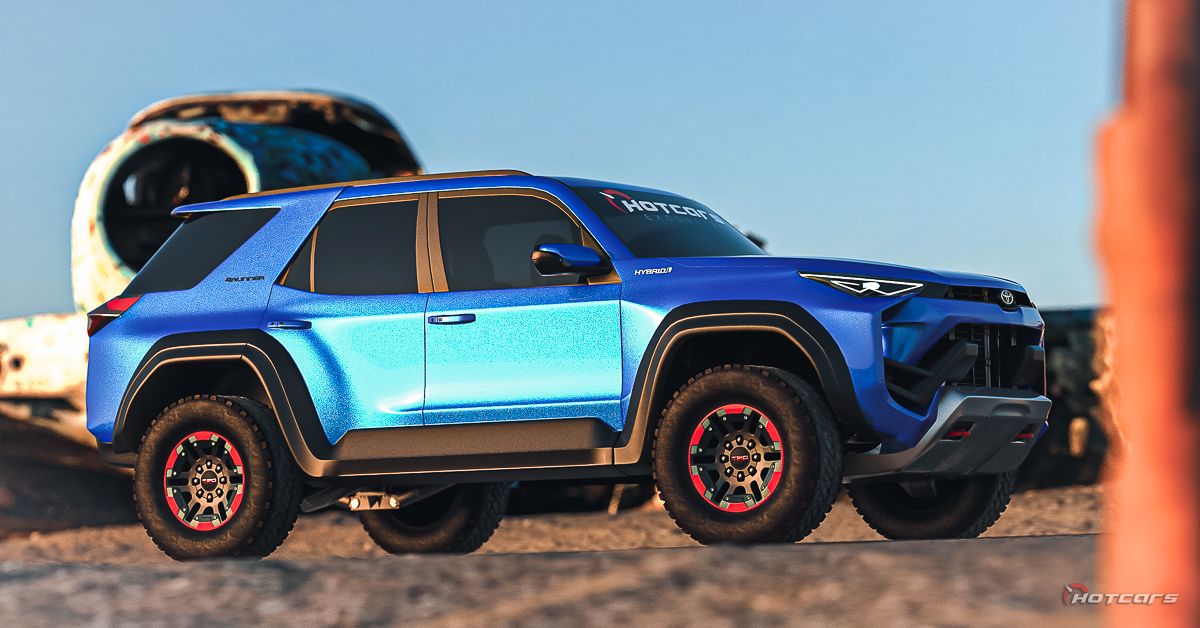The 2025 Toyota 4Runner: A Look At Fuel Efficiency And Performance
The 2025 Toyota 4Runner: A Look at Fuel Efficiency and Performance
Related Articles: The 2025 Toyota 4Runner: A Look at Fuel Efficiency and Performance
Introduction
With enthusiasm, let’s navigate through the intriguing topic related to The 2025 Toyota 4Runner: A Look at Fuel Efficiency and Performance. Let’s weave interesting information and offer fresh perspectives to the readers.
Table of Content
The 2025 Toyota 4Runner: A Look at Fuel Efficiency and Performance

The Toyota 4Runner, a stalwart in the SUV market, has long been lauded for its ruggedness, off-road capability, and spacious interior. However, fuel efficiency has historically been a point of contention for the 4Runner, especially when compared to its more fuel-conscious competitors. As we approach 2025, anticipation for the next generation 4Runner is high, with many hoping for significant improvements in fuel economy.
While Toyota has not yet released official details about the 2025 4Runner, speculation and analysis based on current trends and industry developments provide insights into the potential fuel efficiency figures.
Factors Influencing Fuel Efficiency
Several factors will likely influence the fuel efficiency of the 2025 4Runner:
- Engine Technology: The 4Runner’s current V6 engine, while powerful, is known for its thirst. Toyota may opt for a hybrid powertrain, potentially combining a smaller, more efficient gasoline engine with an electric motor. This could significantly improve fuel economy without compromising performance.
- Weight Reduction: Utilizing lighter materials in the body and chassis could result in improved fuel efficiency. Advanced manufacturing techniques and the use of materials like aluminum and high-strength steel could contribute to weight reduction.
- Aerodynamics: Optimizing the 4Runner’s body shape for better aerodynamics can reduce drag and improve fuel economy. This could involve streamlining the front grille, smoothing out the body lines, and adding a rear spoiler.
- Transmission and Drivetrain: Improved transmission technology, such as a 10-speed automatic or a continuously variable transmission (CVT), could enhance fuel efficiency by optimizing gear ratios for optimal power delivery.
- Advanced Fuel-Saving Systems: Features like engine stop-start technology, regenerative braking, and active cylinder management can contribute to improved fuel economy by reducing engine load and energy consumption.
Potential Fuel Efficiency Estimates
Based on these factors and considering the advancements in fuel efficiency technology across the automotive industry, it is reasonable to expect the 2025 4Runner to achieve a significant improvement in fuel economy compared to its predecessors.
- Hybrid Powertrain: If Toyota introduces a hybrid variant, the 2025 4Runner could achieve fuel efficiency figures in the mid-20s to low 30s mpg, depending on the specific hybrid system and driving conditions.
- Improved Gasoline Engine: Even without a hybrid powertrain, advancements in engine technology, weight reduction, and aerodynamics could lead to an increase in fuel efficiency to the high 20s mpg range.
The Importance of Fuel Efficiency
Improved fuel efficiency in the 2025 4Runner is crucial for several reasons:
- Reduced Fuel Costs: Lower fuel consumption directly translates to lower fuel expenses for owners, making the 4Runner a more cost-effective vehicle to own and operate.
- Environmental Impact: Improved fuel efficiency reduces the 4Runner’s carbon footprint, contributing to a cleaner and more sustainable environment.
- Competitive Advantage: In a market increasingly focused on fuel efficiency, a more fuel-efficient 4Runner would be more competitive and appealing to a wider range of buyers.
FAQs
Q: What is the estimated fuel efficiency of the 2025 4Runner?
A: While official figures are not yet available, estimations based on industry trends suggest that the 2025 4Runner could achieve fuel economy in the mid-20s to low 30s mpg, depending on the powertrain and driving conditions.
Q: Will the 2025 4Runner be available with a hybrid powertrain?
A: Toyota has not yet confirmed the availability of a hybrid powertrain for the 2025 4Runner, but considering the increasing popularity of hybrid SUVs, it is a strong possibility.
Q: Will the 2025 4Runner retain its off-road capabilities?
A: While fuel efficiency is a priority, Toyota is unlikely to compromise on the 4Runner’s renowned off-road capability. The 2025 model is expected to retain features like four-wheel drive, a robust suspension, and ample ground clearance.
Q: When will the 2025 4Runner be released?
A: Toyota has not yet announced a specific release date for the 2025 4Runner. However, based on typical model cycles, it is likely to arrive sometime in late 2024 or early 2025.
Tips for Improving Fuel Efficiency
- Drive Smoothly: Avoid aggressive acceleration and braking, as these actions consume more fuel.
- Maintain Tire Pressure: Properly inflated tires reduce rolling resistance and improve fuel economy.
- Reduce Cargo Weight: Unnecessary weight in the vehicle can reduce fuel efficiency.
- Use Cruise Control: Cruise control helps maintain a constant speed, reducing fuel consumption.
- Avoid Idling: Turn off the engine when stopped for extended periods.
Conclusion
The 2025 Toyota 4Runner is poised to be a significant update for the iconic SUV. With anticipated improvements in fuel efficiency, the 4Runner is likely to retain its ruggedness and off-road capability while becoming more environmentally friendly and cost-effective to operate. While official details remain under wraps, the expectation is that the 2025 4Runner will offer a compelling combination of performance, practicality, and fuel efficiency, making it a strong contender in the SUV market.








Closure
Thus, we hope this article has provided valuable insights into The 2025 Toyota 4Runner: A Look at Fuel Efficiency and Performance. We hope you find this article informative and beneficial. See you in our next article!